|
This week’s blog post features an interview with Harley-Davidson Museum motorcycle restorer/conservator Bill Rodencal. Special thanks to HDM’s Tim McCormick for coordinating this interview. On the third floor of the Annex building at the Harley-Davidson Museum in Milwaukee’s Menomonee Valley, the balance of the company’s historic vehicle collection resides. This collection was begun during the earliest days of the Motor Company’s humble beginnings, and at least one bike from each model year of production has been saved. Visitors are allowed to take the elevator from the second floor of the Annex building to the third-floor viewing area and see where the collection is housed. The Archives three-tiered motorized racking system houses over 300 motorcycles on their own individual pallets. Photograph courtesy of Harley-Davidson Museum. All rights reserved. What is this? Welcome to the Motorcycle Storage and Conservation area. This area houses the balance of the company’s historic motorcycle collection. Over 300 motorcycles are stored on individual pallets with open spaces for future growth. These bikes are equally important as the bikes in the museum, we just don’t have room to display them all. The palleted bikes are stored on a moveable racking system developed by a local Wisconsin company. The lower spaces contain machines that are the tallest in height many with windshields, and the upper racks are for shorter bikes due to interference with lighting and sprinkler pipes. The reason for this is to maximize the entire space to store the most possible bikes within the space. The motorcycles can be retrieved by a small forklift that resides in the storage area. A selection of vintage engines stored in the powertrain storage racking. Photograph courtesy of Harley-Davidson Museum. All rights reserved. What is it composed of? The bulk of the machines in this room consist of examples the company has and continues to save from the assembly line since having never been started or run on the road. Others may include styling mockups and prototype vehicles or those added from outside sources including historic race machines, celebrity bikes, bikes used in Hollywood movies, or just motorcycles with important stories or historic motorcycle prowess. How is the area used? In the early days of the Motor Company, the founders believed it important to retain motorcycles to document company history. This is a process that continues to this day. This is a working collection and we frequently collaborate with other internal Harley-Davidson departments and use these bikes for such things as part fitments of service parts on older models, members of the Styling Department use them for ques on future products, or as examples to be copied for licensed product such as die-cast models. The workspace also doubles as an area to prep for upcoming exhibits and outgoing loans. In this area we also prepare, photograph and conserve new vehicles that are added to the collection and well as our powertrain collection of over 160 historic engines and transmission examples. A large motorized turntable with a neutral backdrop serves as a photo studio for creating vehicle photography used in label copy as well as for insurance purposes. A large motorized turntable is used to photograph motorcycles from 10 angles for both insurance purposes and to be used for various company initiatives. Two prototype three-wheeled vehicle serve as the “model” in this photo. Photograph courtesy of Harley-Davidson Museum. All rights reserved. Philosophy of Conservation? As a rule, we practice conservation/preservation. Our goal is to keep the artifacts in a stable condition as close the state we received it in (original or as used by someone) for as long as possible. Artifacts and their condition tell us stories. If you alter an artifact, you’re changing its story. As historians and caretakers, we don’t want to do that. Motorcycles are disassembled and painstakingly cleaned and reassembled without repainting or replating. Occasionally, the Archives Dept. consults with outside conservation experts regarding artifacts that need preservation treatment. The only time the Archives would consider restoring a motorcycle is if that bike were to come into the collection from the outside and had been improperly restored by a previous owner. A 1924 model JD undergoing cleaning and stabilization in the Archives Motorcycle Conservation area. Photograph courtesy of Harley-Davidson Museum. All rights reserved. A 1924 model JD undergoing cleaning and stabilization in the Archives Motorcycle Conservation area. Photograph courtesy of Harley-Davidson Museum. All rights reserved. Motorcycle Conservation. Unlike artifacts made of a single composition, motorcycles are unique that they may contain many different types of materials such as aluminum, steel, leather, cloth or plastic covered wiring or paper gaskets. Many of these require specific conservation techniques and thrive better in different environments. Iron is more stable in very dry air while leather prefers a slightly more humid space. Therefore, a happy medium must be achieved to provide the most optimum long-term storage situation. Tires are filled with compressed nitrogen to reduce the moisture content inside the tire or tube and being eight times denser than compressed air it will stay inflated for longer periods of time. Materials used have also changed over time. Early vehicles were finished with clear or yellow copal varnish like that used by violin makers over the top of the enamel base color. Today modern clear coat paints are used to protect the base finish. All of this must be taken into careful consideration prior to undergoing a successful conservation.
~Bill Rodencal, motorcycle restorer/conservator at Harley Davidson Museum Visit the Harley-Davidson Museum website to read stories from the archives, to learn more about the permanent and special exhibitions, and to see a listing of upcoming events. #HarleyDavidsonMuseum #VisitMKE #VintageMotorcycles #HarleyDavidson #SafeStorage #PreserveYourCollection This week’s blog post features Debra Brehmer, founder and Gallery Director of Milwaukee’s Portrait Society Gallery. Debra Brehmer is an art historian who has taught part time at the Milwaukee Institute of Art and Design. She has curated numerous exhibitions and written extensively about art for various publications for more than 20 years. She is a regular contributor to the national art publication, Hyperallergic. She was also a founder and the publisher and editor of Art Muscle Magazine. Debra Brehmer in her kitchen with a painting by Tracy Cirves, Red Crimped Hair, 2019, oil on canvas, 48x36 inches Photo courtesy of Debra Brehmer. All rights reserved. What do you collect and why? I suppose that more than “collect,” I acquire or gather. Collecting sounds too intentional for the work I have amassed. As an art dealer, I’m always looking at art. Every day, whether it is on Instagram or, prior to Covid, making trips to museums, galleries and artists’ studios. My happiest times are when I can linger for full days in museums. I have a lot of artwork from the artists we represent at Portrait Society Gallery. Maybe some of the more telling works are things I acquired prior to owning an art gallery. Let’s start with Fred Stonehouse. It was the 1990s. Many of us lived in Walker’s Point. I was publishing Art Muscle Magazine and going to graduate school and working at the Milwaukee Art Museum. Fred had just graduated from UWM and his studio was on 5th Street. My then partner and I purchased our first art work from Fred. His style was already fully formed. Our painting is called “The Memory of Sound.” I am still able to lose myself within this dreamy tropical river scene. The painting is on a solid wood panel. I always worried that it would fall on one of my toddlers. Fred Stonehouse, The Memory of Sound, 1986, acrylic on board, 60x48 inches. Photo courtesy of Debra Brehmer. All rights reserved. My most cherished objects are from Mary Nohl. I did my master’s thesis on Mary when she was alive and got to know her. When I finished my thesis, she let me pick a painting. When I gave birth to my second child, she also let me pick a painting. Mary Nohl was one of the most exceptional people I have had in my life. Living with her paintings and ceramics reminds me on a daily basis to not care what other people think, to remember that making art is one of the most worthwhile and rewarding endeavors we can engage in, and that being a woman means you will have to bear the weight of discrimination. Mary Nohl, Untitled, 1960’s and revised in the 1990’s, oil on panel, 23x35 inches. Photo courtesy of Debra Brehmer. All rights reserved. I live with art because it is like insulating your home and walls, with reminders of human potentiality. Art making is a distillation of focus and observation. It requires a sensitivity to life. It is also a celebration of beauty and invention. What could be better? Since COVID, I’ve been home so much that I’ve rearranged the art. It is a pleasure to move things and see them anew. I now have this incredible Tracy Cirves painting in my kitchen that literally brings me daily joy. I swear it sheds beams of psychic light. I also have wonderfully oddball objects such as a sculpture made from beaver-chewed wood by David Niec (next to one of his moon paintings), paintings by my friends Kay Knight and Pat Hidson, several Mark Mulhern monotypes, a 1940s Schomer Lichtner that I adore, and a recently acquired repurposed leather textile by Rosemary Ollison, a 2019 City of Milwaukee Artist of the Year. A bureau in Brehmer’s home serves as the base for a vignette of art and objects. David Niec’s "Moonrise at 29 percent, Lake Michigan," 2015, Oil on panel, 14 1/4 x 11 1/4 inches is shown behind a found beaver-chewed log he made into a sculpture. Also shown are Richard Knight’s Building a Box," Mixed media on paper, 20 x 23 inches, and ceramic heads by Claire Loder and Deb Brehmer. Photo courtesy of Debra Brehmer. All rights reserved. When and how did you get started I started collecting in grade school. I was in love with a boy in the 5th grade because he could draw. I would steal small things from his desk: an eraser, a pencil, etc. I created a secret museum under my dresser where I presented the objects with labels and acquisition dates. One time, he actually gave me a pencil drawing. Another formative experience was when I was in middle school. My parents had friends whose son was in art school at UW-Madison. He had brought home his large abstract paintings from his thesis show. When I admired them, he said I could pick one. I still have it. When I was a kid, I had many collections: match books, tiny bars of soap, sugar packages, plastic horses, erasers in the shapes of animals, ceramic animals, troll dolls. How do you safely store your collection and care for it? I am fortunate to have a storeroom in the Marshall Building near my gallery where I can keep things. But storage is always a bit of a problem. Often, people will tell me that they can’t buy something they love because they don’t have room on their walls. I believe it is essential to rotate works. Don’t leave the same things in the same place forever. I would recommend that people find a secure place to store work and then at least once year, shake things up. Move things around. I also collect handmade, crocheted hot pads and mosaic vintage ashtrays. I have not found a good way to store these objects. I wish I could frame every hot pad and do a large wall of them. They were shown in a gorgeous installation at UWM at the Union Art Gallery in a show about artists and dealers’ collections. What has been the most challenging for you in developing a collection? I am drawn to certain types of objects and the biggest challenge is to keep expanding my interests and tastes, to go beyond what I ‘think’ I like. Most of the work I own is figurative. In the past four months, I’ve been drawn to non-objective work with quiet open spaces. I’ve been on an Agnes Martin influenced binge, seeking out work by women artists with that light, precise, meditative touch. (One local example is the textile artist Heidi Parkes). Surely this is symptomatic of our anxious time. I was wowed by the Lenore Tawney show at the Kohler. I’m a relatively new convert to textiles and fiber arts. It is important to challenge your own interests. I am not in the economic bracket to purchase expensive things, but I don’t find that limiting. Regional art and humble objects can be affordable. Do you have any advice for new collectors? If you want something, take the leap. Find a way. Artists often have great collections because they trade with each other. Collecting art is not simply a pursuit of the wealthy. I have a friend who has amassed an incredible collection of smooth round stones. The act of collecting is creative by nature, and thus rewarding. You are committing to beauty and ideas, to expansive languages that are not readily translatable. The best collections are those that leap from high to low: paintings, photographs or sculptures along with unexpected objects and low-priced resale store finds or work by emerging artists. I will do a shout-out to Tim and Sue Frautschi on this and Joseph Pabst. Do not worry about whether something is “good” by anyone else’s standards. Collecting art is personal. It is about your interests, values, memories, ideals, it is about what happened to you last year and how you want to embed those feelings in an object. A painting by Bernard Gilardi interacts with a leather textile by Rosemary Ollison. Photo courtesy of Debra Brehmer. All rights reserved. It is about where you want to travel in your mind. Most importantly, support your local art community. This is satisfying because you are participating in the infrastructure of your own creative sector. You can get to know the artists, visit their studios. It is gratifyingly hands on. ~Debra Brehmer, Portrait Society Gallery, August 2020 #ArtCollector #GuardYourCollection #PortraitSocietyGallery #DebBrehmer #MilwaukeeArtScene #MaryNohl #FredStonehouse #DavidNiec #RosemaryOllison #TracyCirves #BernardGilardi #SecureArtStorage
This week’s blog post features art advocate, educator, and, when time allows, artist Jody Alexander. Jody moved back to Milwaukee after living in San Francisco where she studied art history. She worked at the Milwaukee Art Museum and continues to serve on the board of the African American Art Alliance for nearly 20 years. The African American Art Alliance is one of nine support groups at the Milwaukee Art Museum that focus on specific areas of interest within the collection. The AAAA helped secure Kehinde Wiley’s St. Dionysus for the permanent collection. Jody Alexander also taught life skills to students in the Pathways to College program. Jody Alexander at a Gallery NO:105 artists reception. Photo courtesy of Jody Alexander. All rights reserved. In 2010, Jody Alexander founded the organization Blk-Art*History&Culture which teaches children black history by using the art of iconic African American artists. She creates Information Stations at churches, schools, libraries, and community centers with works from her extensive collection of art, books, black memorabilia, and music. Alexander started the pop-up Gallery NO:105 in 2015 and since 2016, she has headed the MARN Mentor program for the Milwaukee Artist Resource Network (MARN). This year’s exhibition will be up through August 28th. She also founded the Sisters of Creativity, a group which “seeks to recognize African-American women who have long been marginalized from the mainstream art world.” Their exhibition A Community of Voices will be on view at the Museum of Wisconsin Art through September 6th, 2020. As Jody said during our interview, “Everything I do is around art.” What do you collect and why? Much of the work I collect is by Wisconsin and regional artists. If it speaks to me, I add it to the collection. I trust my instinct. Margaret Burroughs, Faces A’ La Picasso, a preliminary drawing for the print series. Photo courtesy of Jody Alexander. All rights reserved. Rosemary Ollison, Untitled, ink drawing Photo courtesy of the artist, Portrait Society Gallery, and Jody Alexander. All rights reserved. One special piece is a carved Shona sculpture from Zimbabwe. At the time I couldn’t afford it. I spoke with the owner of the Mhiripiri Gallery in Minnesota who let me take it home after making a deposit. He could see how much I loved it and trusted me to pay for it. It took me a year to pay it off. It became the logo for my organization Blk-Art*History&Culture. Shona sculpture in the collection of Jody Alexander. Photo courtesy of Jody Alexander. I have since purchased more work from him. Some of the work was in the 2019 Sneak Peek Part II: A Look at Private Collections exhibition at the UWM Union Art Gallery. Installation view of Sneak Peek Part II: A Look at Private Collections exhibition at the UWM Union Art Gallery. I also collect Wisconsin artists that I work with. My gallery, Gallery NO:105, organizes pop-up exhibitions, artist markets, and other events featuring artwork by local artists available for purchase. I met Ebony Tidwell at the Black Arts Festival and purchased a painting. I invited her to be in the MARN Mentors program because I could see her potential and loved her work. Ebony enjoys developing her skills with her mentor Della Wells. Rosie Petry is another artist from the program whose potential I saw early on. I am proud of her achieving the Artist in Residence at the Pfister Hotel. Ebony Tidwell, Untitled, acrylic on canvas. Image courtesy of the artist and Jody Alexander. All rights reserved. When and how did you get started? I bought my first piece of African art, a wood sculpture of a fertility doll at a festival when I was 19. I didn’t know what I was buying, but it spoke to me. I later learned I had fertility issues. This wood sculpture of an African fertility doll is the first piece Alexander purchased. Image courtesy of Jody Alexander. All rights reserved. Art always finds me and my collection is always evolving. I just bought a piece by Chrystal Gillon. I scooched another piece over to make room for it. Somehow it all falls into place Miss America Lula Mae Toussant, mixed media assemblage’ by Chrystal Gillon. Image courtesy of the artist and Jody Alexander. All rights reserved. How do you safely display and/or store your collection? I am reluctant to loan things out because there is always a chance for damage. There are some works that I won’t loan because I love them too much. Over the years, some pieces have been featured in a magazine article in Black Women 50+ and on Milwaukee PBS’s program Black Nouveau. I keep wood sculpture out of the light. No direct sunlight on any piece. When I select pieces for my public Information Stations, I wrap everything carefully to keep it safe during transport. I have a guest room where items can be stored safely. I practice safety due to the investment and the fact that it is a blessing to be able to collect. I never, ever buy a piece of art thinking about the resale value. I collect for my own pleasure. I have certain pieces that I never move – they stay in a permanent location in my home and I work in new acquisitions around them. What has been most challenging for you in developing your collection? I don’t have a strategy – each item is a piece of a puzzle that becomes more complete with time. I live in a space that is about 750 square feet and don’t want it to look cluttered. Visitors have told me my apartment looks “curated”. Once a year I have an open house for my Blk-Art*History&Culture collection. When I have these events, I stagger the number of visitors to avoid overcrowding. Do you have advice for new collectors? Stop worrying that collecting art is only for the rich. I am not rich, but I have rich relationships and get great satisfaction going to lectures and exhibitions. A good way to start is by going to the student shows at the Milwaukee Institute of Art & Design or Mount Mary or festivals such as Art Fair on the Square or the Black Arts Fest MKE or local galleries where art is affordable. Go to artist studios. I got this piece from Corey McVey of Milwaukee Potters Guild located in the Marshall Building. Ceramic Platter by Corey McVey. Image courtesy of the artist and Jody Alexander. All rights reserved. The last 20 years have been a wonderful journey. Milwaukee has become a fabulous art hub. I am thrilled to be a part of the Milwaukee art scene. And I love maintaining friendships with the artists I meet. ~Jody Alexander, July 2020 #ArtCollectorInterview #JodyAlexander #AfricanAmericanArt #AfricanArt #ArtandEducation
#PreserveYourCollection #SecureArtStorage |


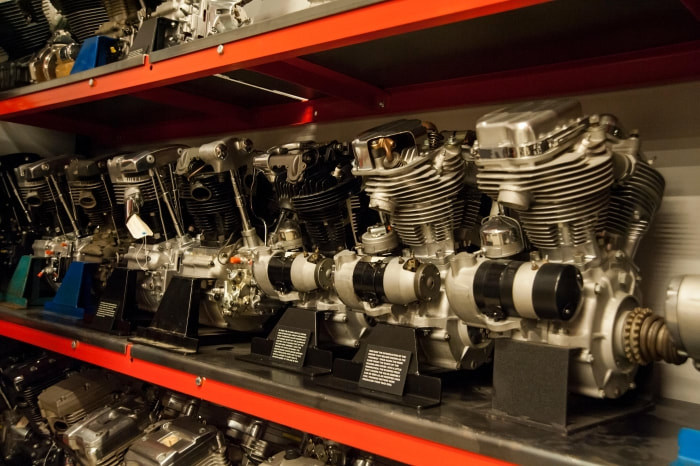
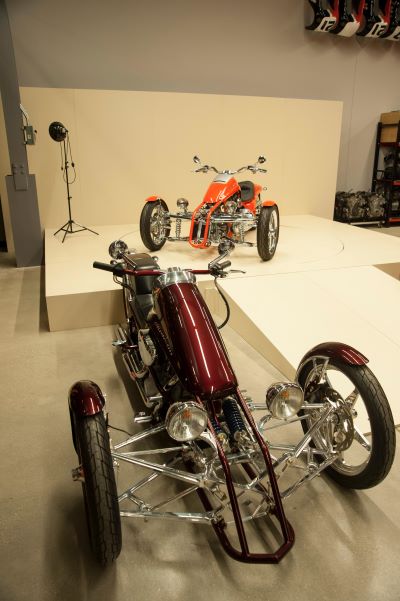
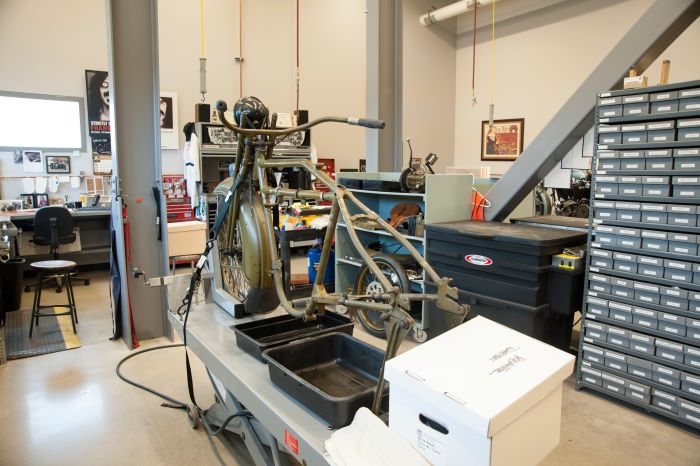
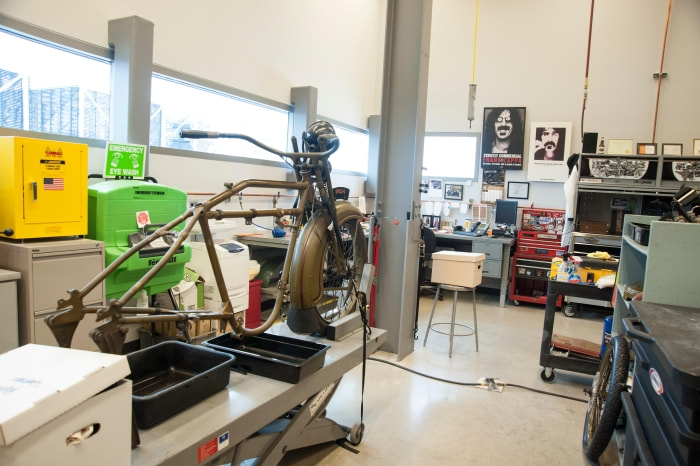
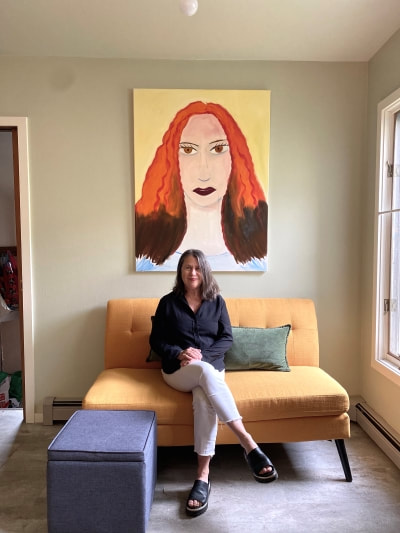
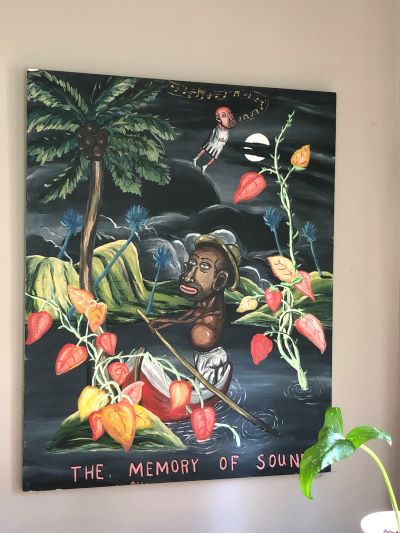
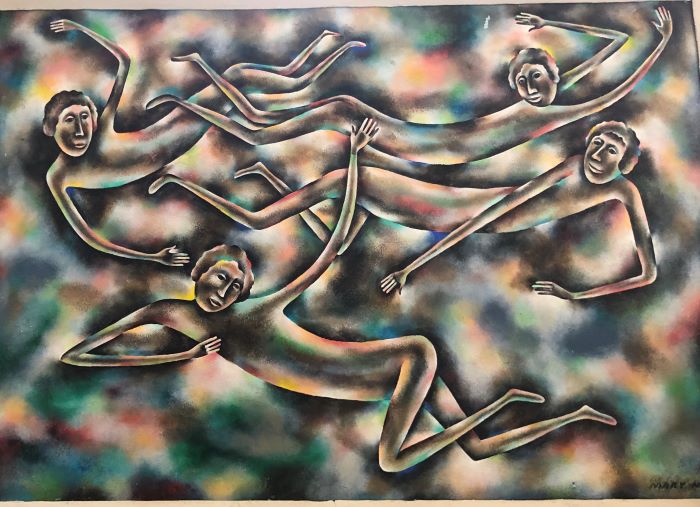
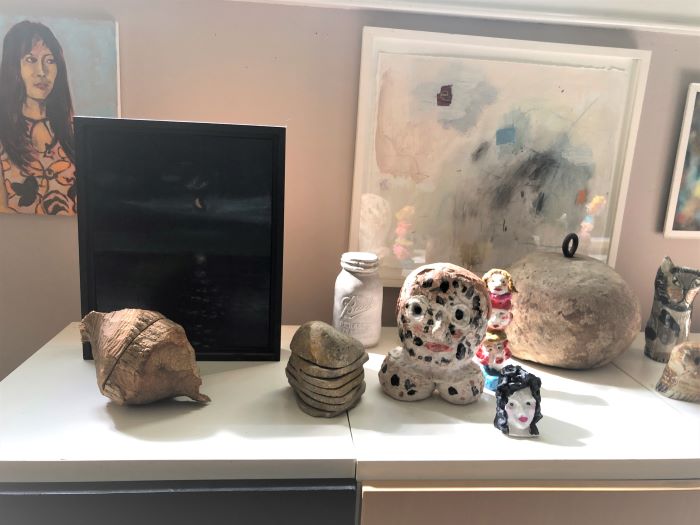
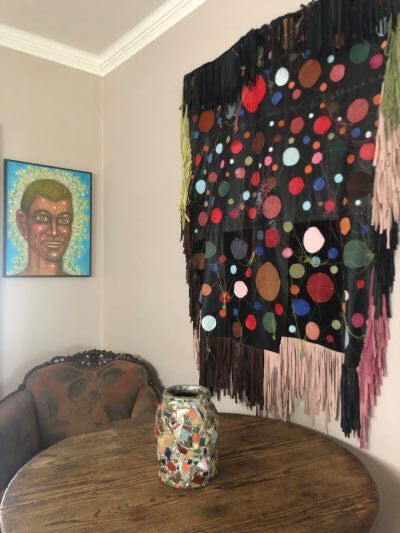
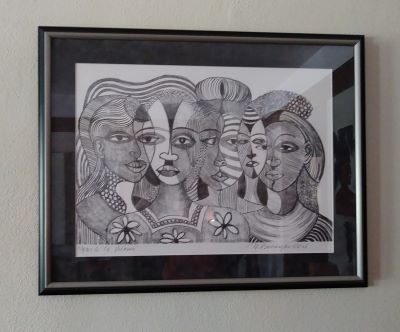
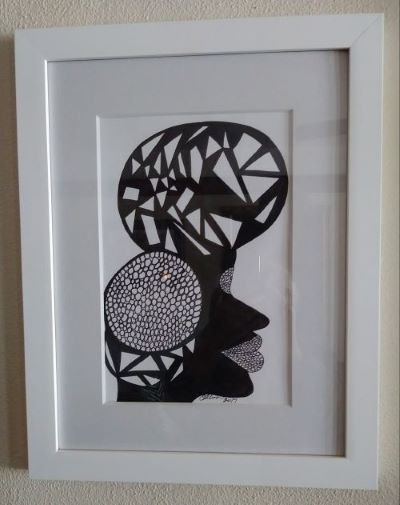
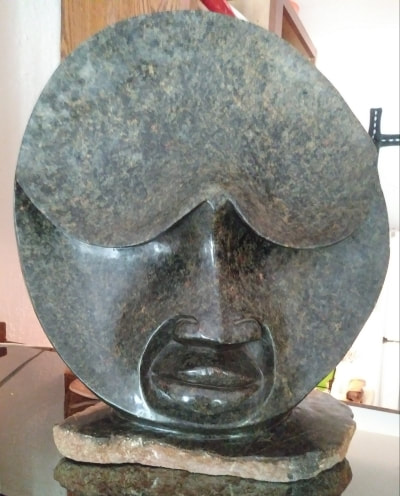
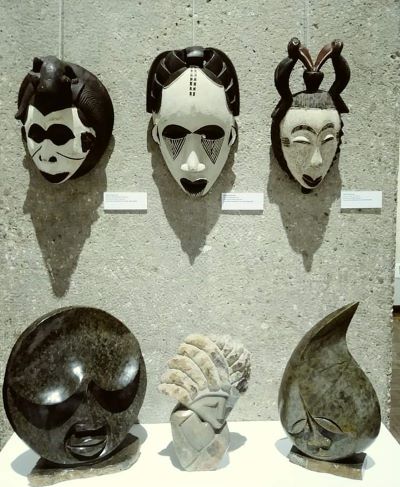
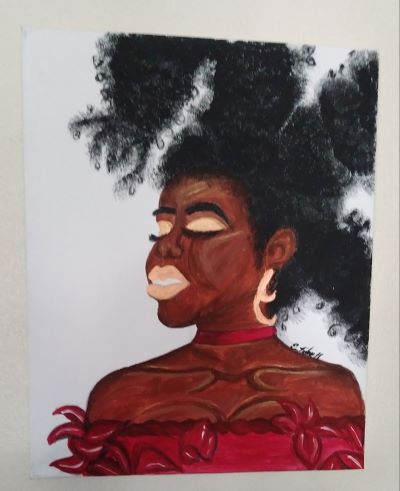
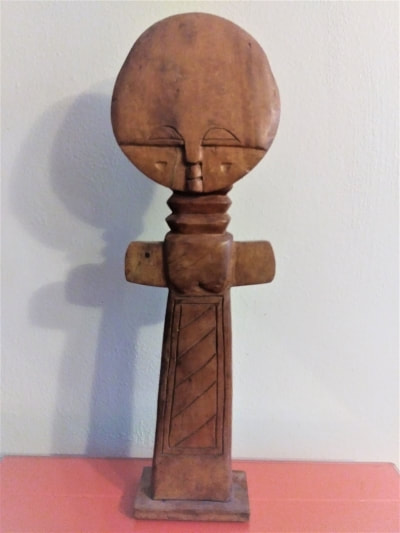
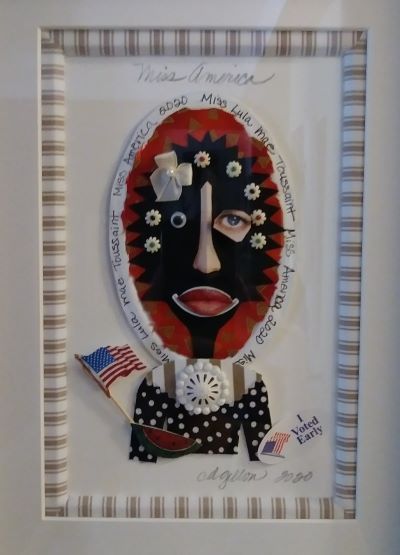
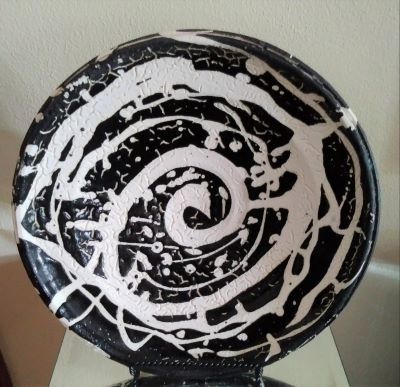
 RSS Feed
RSS Feed





